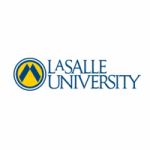Below is a summary of the abstract you submitted. Presenting author(s) is shown in bold.
If any changes need to be made, you can modify the abstract or change the authors.
You can also download a .docx version of this abstract.
If there are any problems, please email Dan at dar78@pitt.edu and he'll take care of them!
This abstract was last modified on May 5, 2017 at 3:37 p.m..

In August of 2016, two Mycobacteriophages were discovered on the campus of La Salle University in Philadelphia, PA. On a temperate 70 degree day Chance64 was discovered on the surface of an outdoor ashtray by Michael Mercanti and Ading was discovered by Nicholas Dingler in the soil, six inches below the surface, surrounded by dying plants. Each of the samples was enriched using the host Mycobacterium smegmatis mc²155. Through many serial dilutions, web plates were acquired and plaques were measured at 1mm for Chance64 and 7.5 mm for Ading. Both phages produced clear plaques, meaning both were lytic. High titer lysates were harvested from the web plates and the lysates were used for obtaining a photomicrograph and also for DNA extraction. The photomicrograph of Chance64 showed it had a long tail and was a Siphoviridae. We were not able to get a good picture of Ading. Owing to the quality of the DNA extracted both Chance64 and Ading were sent to the University of Pittsburgh for sequencing. That is where the similarities came to an end. DNA sequencing confirmed that Chance64 is a Siphoviridae and that Ading as a C1 phage is a Myoviridae (having a short tail). Chance64 consists of 41,903 base pairs and has a GC content of 66.6%, while Ading consists of 157,399 base pairs and a GC content of 64.6%. Chance64 belongs to the G cluster and G1 subcluster and Ading belongs to the C cluster and C1 subcluster. Chance64 is made up of 62 total genes and 15 of those genes (24%) are dedicated to the construction of the tail, while Ading consists of 240 genes and 12 of those (5%) are dedicated to the construction of the tail. We hypothesized that since Ading was a Myoviridae and had a short tail that it needs more genes in other areas to strengthen the phage as a whole to compensate for the lack of a long tail. A quick look at Phamerator.org showed us that not all Myoviridae phages have long genomes. In addition, the number of lysin proteins is very small for both phages. Chance64 has two lysin genes and Ading has one. Ading also has a LysM, a protein that attaches to peptidoglycan using specific protein domains; this is the only LysM gene found between both Ading and Chance64. We examined the synteny by a pair-wise comparison of the tape measure protein and concluded that the protein was very different in these two phages. We will present the findings of phylogenetic comparisons of our phages and discuss our conclusions about their common ancestry.


